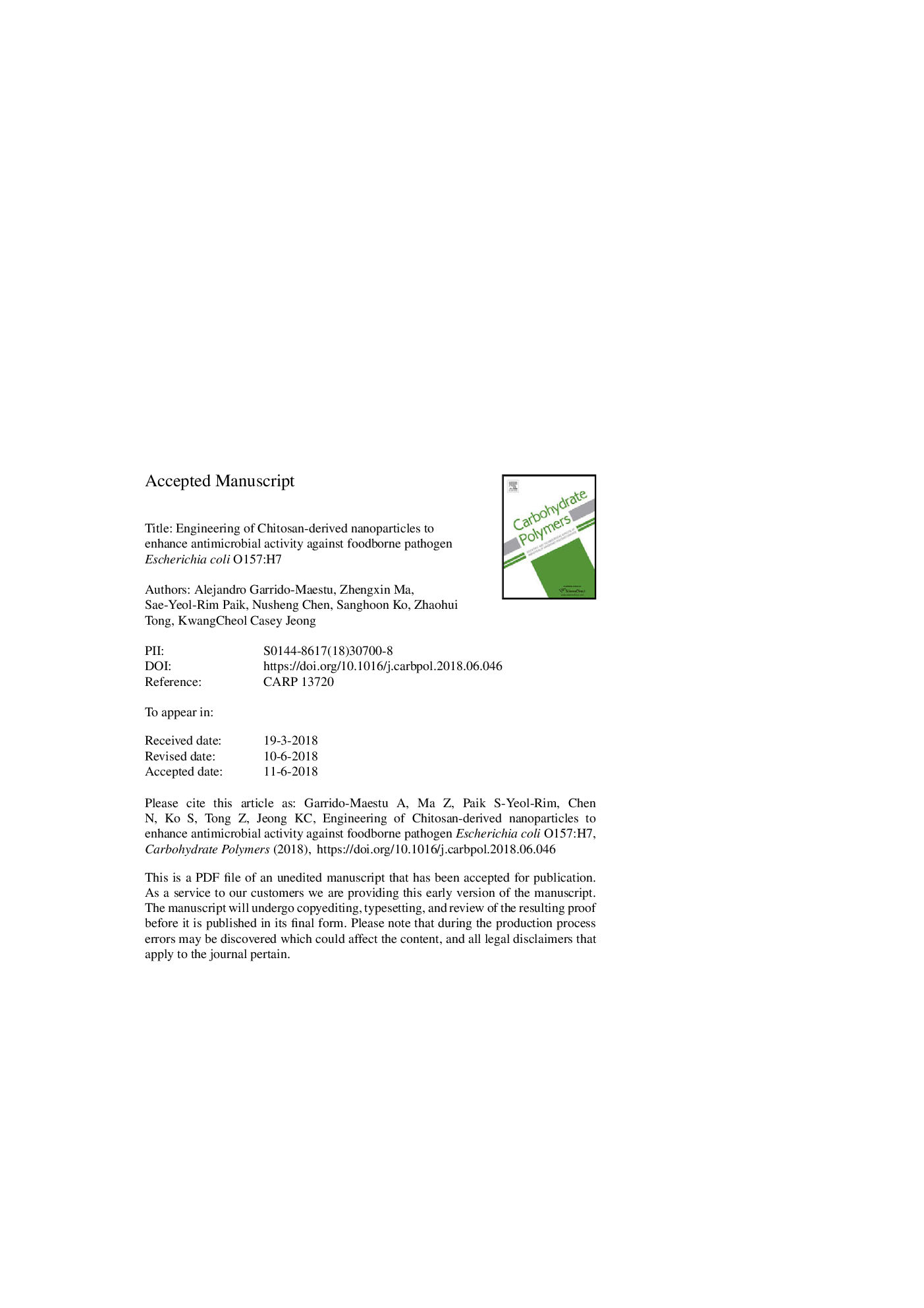| Article ID | Journal | Published Year | Pages | File Type |
|---|---|---|---|---|
| 7781995 | Carbohydrate Polymers | 2018 | 28 Pages |
Abstract
Chitosan is an abundant and natural polymer derived from chitin, which presents a wide variety of properties, including antimicrobial activity. The raising of antibiotic resistant bacteria has increased the interest in finding alternatives to traditional antibiotics. Many studies have assessed the antimicrobial activity of chitosan itself, but a few have performed comparisons among different chitosan nanoparticle synthesis, which will be of particular interest for further applications. In this study, the effects of two types of cross-linking agents, sodium sulfate vs. tripolyphosphate, along with molecular weight (Mw) of chitosan, low vs. high Mw, and different sonication treatments, time and power, were assessed to determine the optimal conditions to enhance antimicrobial activity against bacterial pathogens. Physiochemical characteristics of the engineered chitosan nanoparticles were determined. It was observed that 20â¯min sonication time, low Mw of chitosan, Sodium sulfate as cross-linker, and particle size smaller than <300â¯nm, showed the greatest antimicrobial activity. Chitosan nanoparticles generated at this condition completely killed pathogenic E. coli O157:H7 without raising resistant bacteria, providing great insights into potential use as alternative antimicrobial agents.
Related Topics
Physical Sciences and Engineering
Chemistry
Organic Chemistry
Authors
Alejandro Garrido-Maestu, Zhengxin Ma, Sae-Yeol-Rim Paik, Nusheng Chen, Sanghoon Ko, Zhaohui Tong, KwangCheol Casey Jeong,
